Physical Description
Description and Contents
Marlay cutting It. 13A: parchment, initial approx. 300 x 270 mm, excised along its contours, mounted on cardboard, fragmentary rubric and 4 fragmentary four-line musical staves on the reverse visible in the elemental maps for zinc (Zn, present in the brown iron-gall ink) and mercury (Hg, the primary component of vermilion red)
MS 5-1979: parchment, cutting 170 x 165 mm, initial approx. 150 x 145 mm, mounted on cardboard, 2 fragmentary lines of text and 2 fragmentary four-line musical staves on the reverse visible in the elemental maps for zinc (Zn, present in the brown iron-gall ink) and mercury (Hg, the primary component of vermilion red)
Marlay cutting It. 13.i: parchment, initial approx. 220 x 195 mm, excised along its contours, the reverse contains 2 lines of fragmentary iron-gall ink text ruled in plummet and 2 fragmentary four-line musical staves ruled in vermilion red ink
Marlay cutting It. 13.ii: parchment, initial approx. 260 x 120 mm, excised along its contours, the reverse contains 3 lines of fragmentary iron-gall ink text ruled in plummet and 2 and a half four-line musical staves ruled in vermilion red ink
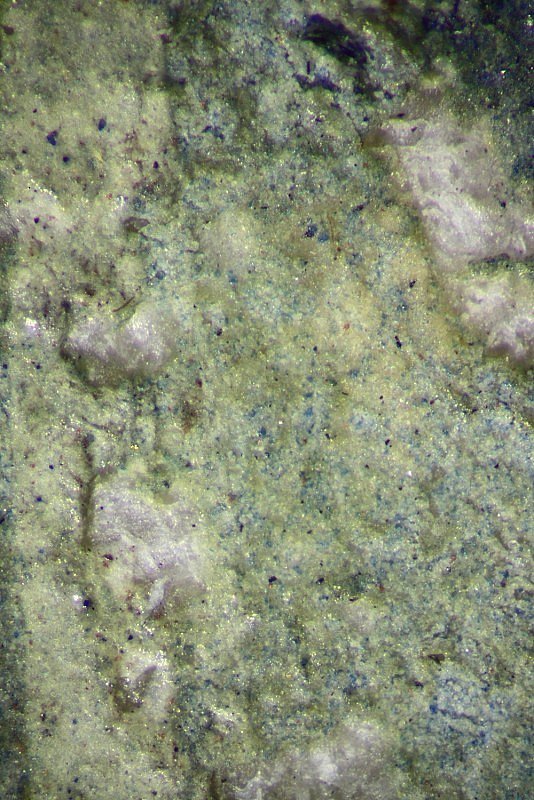
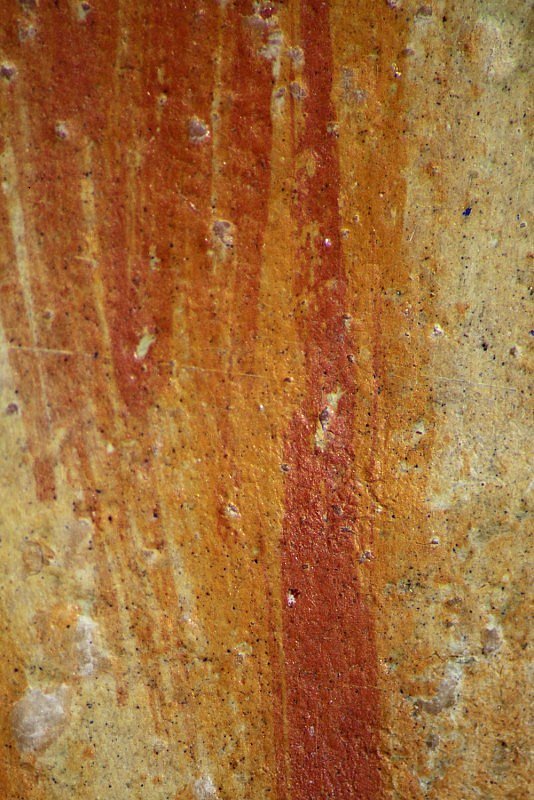
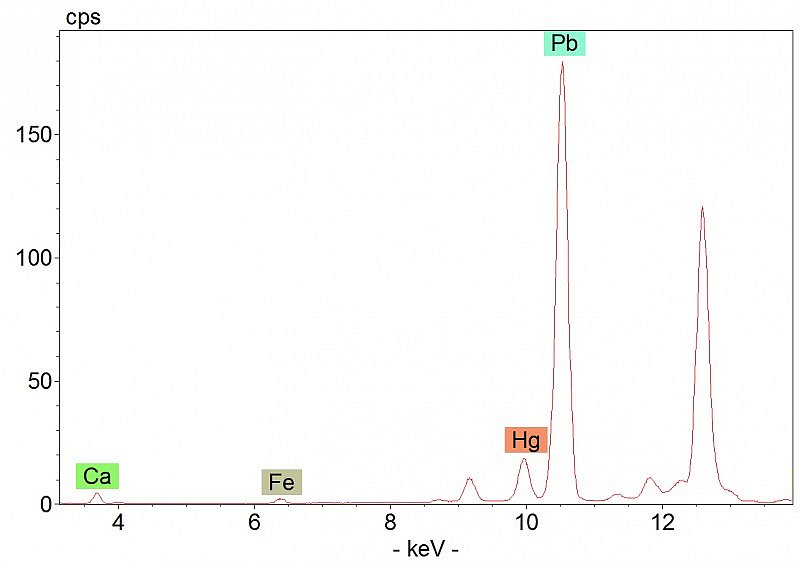
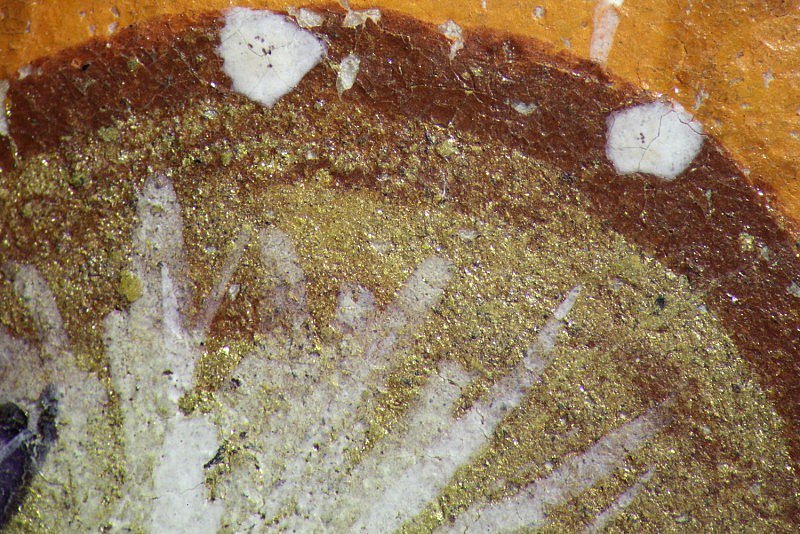
Detail of
the mosaic gold leaf, outlined with a dark red earth pigment, under
magnification (16x). Its shiny aspect and the characteristic peak at 308 cm-1
in the Raman spectrum (below) confirm the presence of mosaic gold.
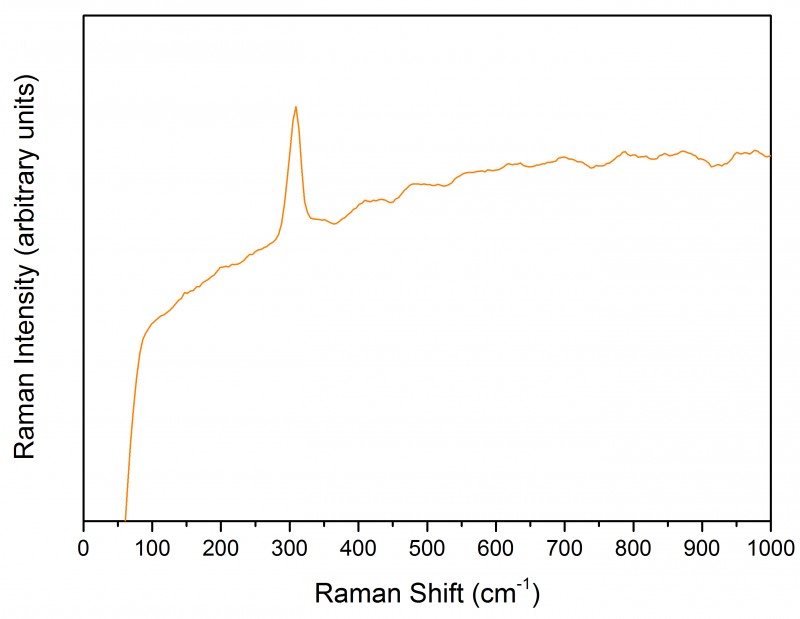
St Laurence
Historiated initial L from an Antiphoner, 1390s
The initial L belonged to the office of Matins for the feast of St Laurence (10 August) in Corale 19, an Antiphoner made in the 1390s. St Laurence is shown with a book, a martyr’s palm branch and his distinctive attribute, the gridiron on which he was tortured. The image has been attributed to various artists: Don Silvestro dei Gherarducci; his collaborator known as the Maestro delle Canzoni; or the Florentine painter and illuminator Mariotto di Nardo.
It is also possible that the figure of St Laurence and the decorated initial were painted by two different artists; despite general similarities, some differences exist between the pigments used in these two areas. Green hues, for example, were all obtained using a mixture of azurite with a yellow pigment. The palm leaf held by the Saint, however, seems to contain ultramarine as well (hotspot 1). The XRF data also suggest the presence of gypsum in most of the border areas analysed, but not in the figure of the Saint.
Related content: Initials from Choir Books
- Artists: The Artists associated with the initial of St Laurence
- Texts and Images: St Laurence
- Description and Contents: Physical Description
- Description and Contents: Script and Textual Contents
- Artists' Materials: Differences in palette
- Artists' Materials: Selective use of egg yolk binder
- Artists' Techniques: Gold tooling
- Artists' Techniques: Painting the flesh
